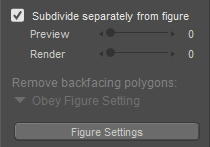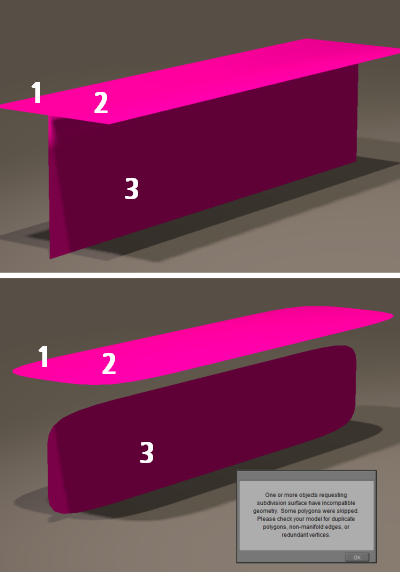Modeling Considerations
When using subdivision surfaces, your model must be clean. There is a lot of content in the Poser world that was not modeled with subdivision surfaces in mind, and you won’t always get the results you expect. This is often due to vertices that are at or close to the same position in 3D space.
In some cases you can select a body part that is causing the issue. Then go into the Properties palette, and check the Subdivide separately from figure option. Set the subdivision setting to zero for that body part. Note, however, that the seam will be more visible where one body part is subdivided to different level than an adjacent body part.

Body parts can also be subdivided individually.
The following conditions will cause subdivision to work improperly, and Poser will notify you when it will be unable to subdivide the model at all.
Edges that are shared by more than two polygons.
Vertices that show up twice in one polygon.
Duplicate polygons that share the same space.
To illustrate what happens when more than two polygons share an edge, the following figure shows an object that is made up of three sections of polygons. Sections 1 and 2 appear along the top of the “T” shape, and are welded along the center length. The third section is perpendicular to sections 1 and 2, and also joins them at the center. Thus, each edge along the middle of the T shares three connecting polygons.
The top section of the following figure shows what this T-shape looks like before subdivision surfaces are activated.

Three sections of polygons sharing the same edge.
The bottom section of the figure shows what happens to these polygons after subdivision surfaces are applied. Poser gives a warning when geometry contains problematic areas. As you can see, the top two sections remain joined together; but the third section, which was connected to the top of the T before subdivision, now appears to be separated from them. You will need to modify the model in areas where three or more polygons share a common edge.